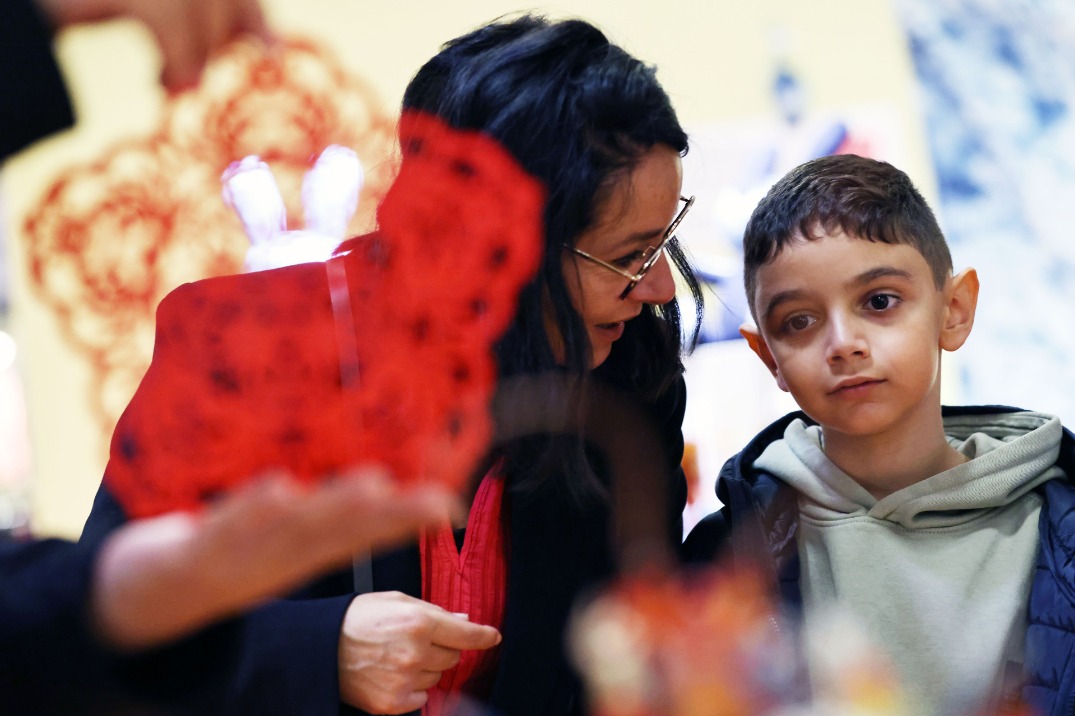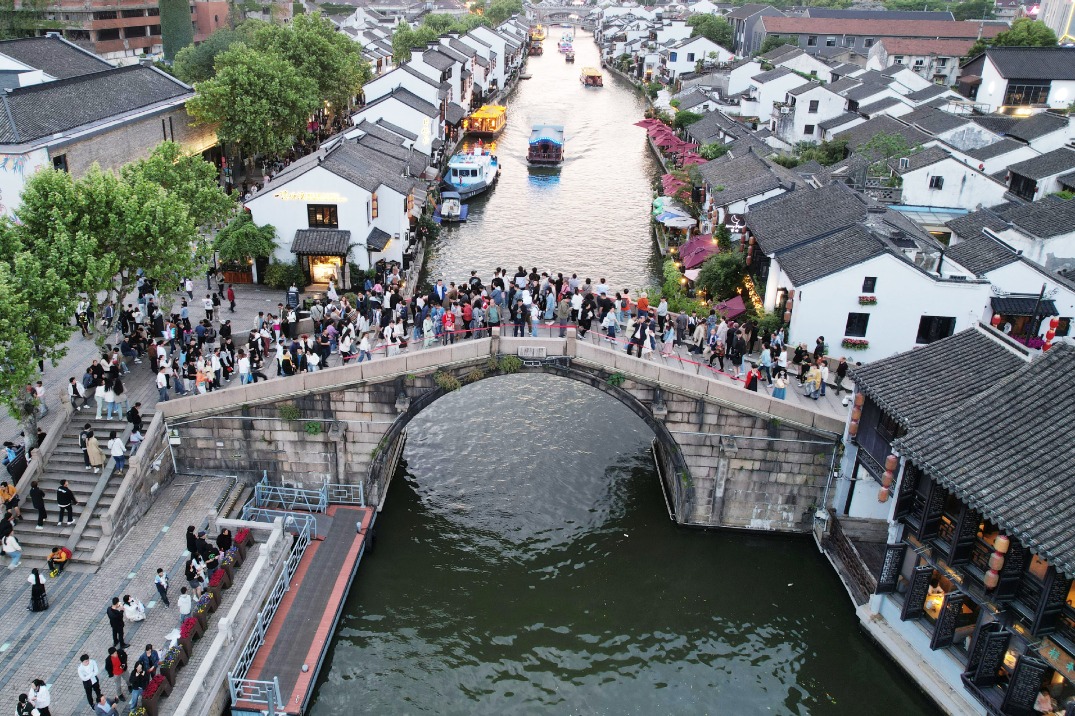Escape the busy crowds of central Beijing

Yanqing county, in the northwest of Beijing, allows you to find some space away from the city's crowds.
Unlike most of the scenic spots in the city's downtown area, you have the chance to enjoy a different experience by visiting the Great Wall, climbing the mountains, and breathing some fresh air.
Badaling Great Wall
Badaling is said to be the most important part of China's Great Wall, dating from the Ming Dynasty (1368-1644).
With an average elevation of 1015 m, the Badaling section of the Great Wall is the front gate of the Juyong Pass, and a place of vital importance in China's military history. The place was where Li Zicheng, a farmer rebel leader, entered Beijing and brought about the fall of the Ming dynasty. It was also the place that allowed Empress Cixi of the Qing Dynasty (1644-1911) to escape during the Eight-Power Allied Forces' invasion of Beijing.
The wall is made up of stones, with the single longest one being 3.1 m and weighing between 1.5 and 1.7 tons, showing the real feat accomplished by people in ancient times when there were no machines.
The Badaling section of the Great Wall has 43 similar stone towers. Most are two-story buildings with the height, length and width all 10 m. Ancient soldiers could not only sleep there in the night, but could also use them to store their personal materials.
The opening times are 6:30 am to 7:00 pm in the summer and 7:00 am to 6:00 pm in the winter. The ticket price is 45 yuan from April 1 to October 31 and 40 yuan from November 1 to March 31. Students pay half price on presentation of their valid certificates. Electronic guides are also provided.
Longqing Valley
The Longqing Valley, reputed as the "Little Three Gorges," makes a good day trip.
A 119-sq-km reservoir allows visitors to take a boat to visit the valley in the summer and autumn. In the cold winter, the annual Ice Lantern Festival featuring myriad attractions, including outdoor ice lantern shows and an international ice and snow sculpture contest, are held.
The themes of each year's Ice Lantern Festival are different, but the core attraction of the festival - a huge ice fall stretching from the top of a 70-m high dam - remains every year.
In the summer, the valley, where the average temperature is 6 degrees Celsius lower than that in Beijing's downtown area, is a good place for people to shield themselves from the heat.
The Jiguan Mountain (or Cockscomb Mountain), Shenxian Yard and Baihua Cave, provide opportunities for people to climb the mountains, play in the water and see different kinds of plants.
Gui River
The Gui River is considered one of the top among the major scenic spots in Yanqing.
Emperors of the Jin and Yuan dynasties were said to be addicted to the beauty of the river, and in the Ming and Qing dynasties the river became a popular place for poets, and praised the scenery in their poems.
With a length of eight km, people can float down the river in a small boat and enjoy the scenery along the way.
Drifting on the river is available only on weekends during mid April and mid October, and on May Day and China's National Day holidays.
The recommended visiting time of the Gui River is from May 1 to mid October.
Guyaju cave complex
A total of 147 caves on the sheer cliff face of a peaceful gorge are in Zhangshanying town of Yanqing, 90 km north of downtown Beijing.
There is no written record of the origin or history of the Guyaju caves, which are a honeycomb of rooms of different shapes and sizes outfitted with doors, windows, kitchens and closets carved from stone.
Some of the quadrangular rooms, ranging from 3 to 20 sq m in size, are interlinked with vertical passages, while horizontal passages connect others. Some of the "houses" feature two to three rooms, while others only have a single compartment.
Any characters or murals that might have once covered the walls of the dwellings have vanished, leaving historians to scratch their heads about who had lived here and when.
Some believe they were built in the Tang Dynasty (618-907), while others contend it was during the Liao Dynasty (916-1125).
(China Daily 06/11/2010)
MOST POPULAR
- 1 Foreigners in China to enjoy more convenient payment services
- 2 China-France economic and trade cooperation
- 3 China introduces policies to facilitate citizens' travels overseas
- 4 Chinese Numbers: Highlights of China's new quality productive forces reveal growth momentum
- 5 Beijing unveils plan to facilitate equipment renewals, trade-ins of consumer goods
Editors' Picks
 Infographic:
China-France relations in overview
Infographic:
China-France relations in overview
 Infographic:
Holiday boom signals China's economic vitality
Infographic:
Holiday boom signals China's economic vitality
 Infographic:
China-France economic and trade cooperation
Infographic:
China-France economic and trade cooperation




